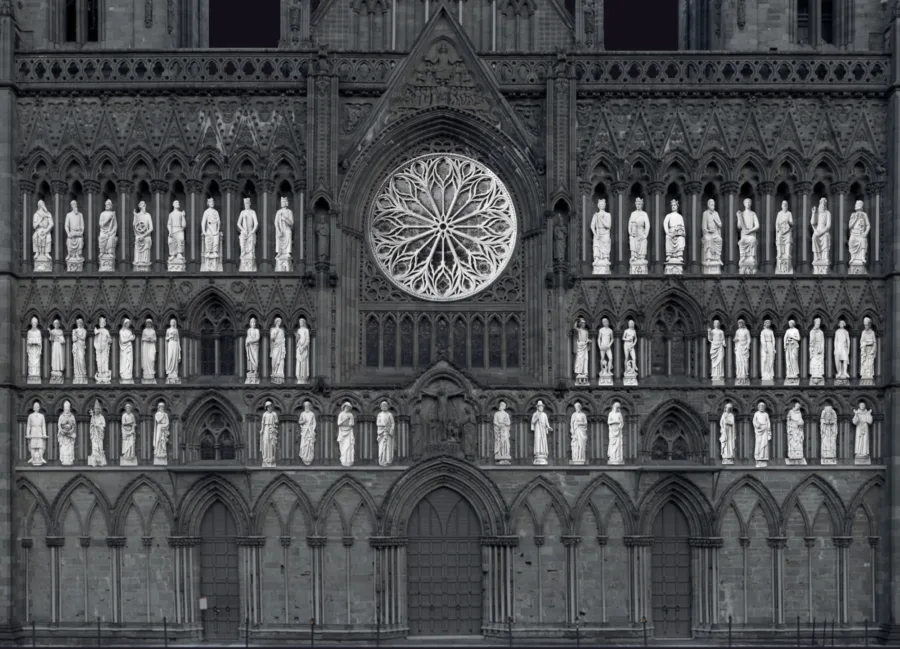St Olav
St Olav is Norway’s patron saint and eternal king – Rex perpetuus Norvegiae.

Olav Haraldsson (995–1030) spent his youth engaging in Viking raids in England and France. However, he was converted to Christianity and baptised just before he was acclaimed king of Norway. He strove to unify the country and introduce Christianity – often using harsh methods that turned people against him. Ultimately, he was forced to flee to Russia. In 1030, he attempted to win back his throne but was killed at the Battle of Stiklestad on 29 June 1030.
According to tradition, Olav’s body was buried where Nidaros Cathedral’s high altar now stands. Soon, people started reporting stories of Miracles. One year after his death, Olav’s gave was opened and to everyone’s surprise, his hair and nails had grown after his death. Olav was declared a saint and Nidaros Cathedral was built over his grave.
For almost 500 years, Olav’s body lay in a beautiful silver casket in the cathedral. After the wave of destruction that followed the Reformation, St Olav’s body was reburied at an unknown location in Nidaros Cathedral.
The statue
The statue depicts Olav as king, with an axe in his hand, a symbol of his martyrdom during the Battle of Stiklestad. The creature beneath his feet probably symbolises his sinful life as a Viking before his conversion to Christianity.
-
Feast day
29 July (Olsok)
-
Attribute
An axe held in the right hand, a lidded tankard or regal orb in his left hand, a human-headed dragon beneath his feet.
-
Patron saint of
Norway, Trøndelag.
-
The sculpture
The sculpture was modelled by Stinius Fredriksen and carved by Per Jenssen. It was completed in 1973.


